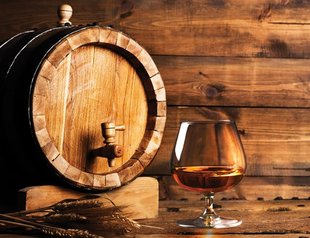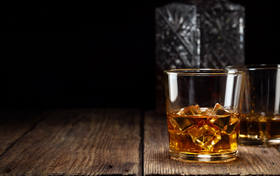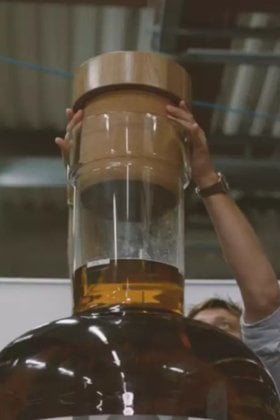Irish Whiskey vs Bourbon: 7 Differences, How To Invest
To novice whiskey drinkers, Irish whiskey and bourbon may seem similar, but there are actually quite a few differences.
Besides originating in different countries, they differ in the ingredients, production processes, taste, pricing, and more.
In this article, we’ll dive deeper into the differences between Irish whiskey vs bourbon and what these two liquors have in common. We’ll also show you the simplest way of investing in them (through Vinovest).
Further reading
- Keen to put your money in the whiskey market? Check out this detailed Guide To Whiskey Investments.
- Explore 15 of the Most Attractive Alternative Investments.
What Is Irish Whiskey?
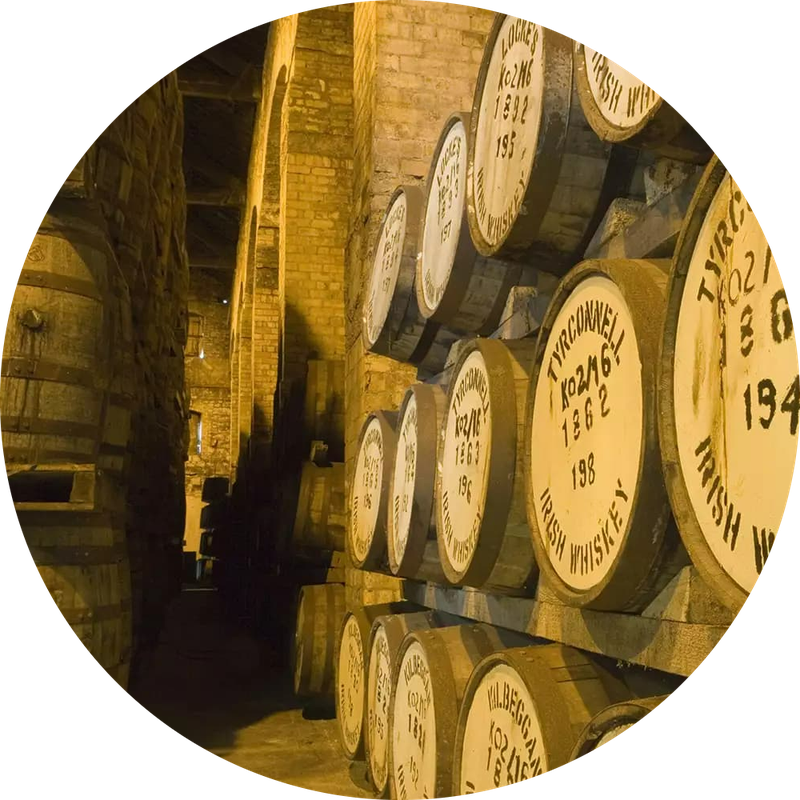
Yes, Irish whiskey is produced exclusively in Ireland. That includes products made in the Republic of Ireland and Northern Ireland (an independent country part of the United Kingdom). Since Brexit, Northern Ireland is no longer a part of the European Union, leading to some supply disruptions.
However, the whiskey must meet a few other requirements before it’s considered Irish.
It must include malt, cereal grain, and barley. It must also be distilled, aged, and bottled in Ireland.
It then needs at least three years of aging in wooden casks and often undergoes triple distillation. This is what gives Irish whiskey its characteristically smooth flavors.
Single pot still Irish whiskey is one of the world’s most popular types of whiskeys, made from malted and unmalted barley. Irish whiskey often has sweet, spicy, caramelly, and toasty notes on the palate.
What Is Bourbon?
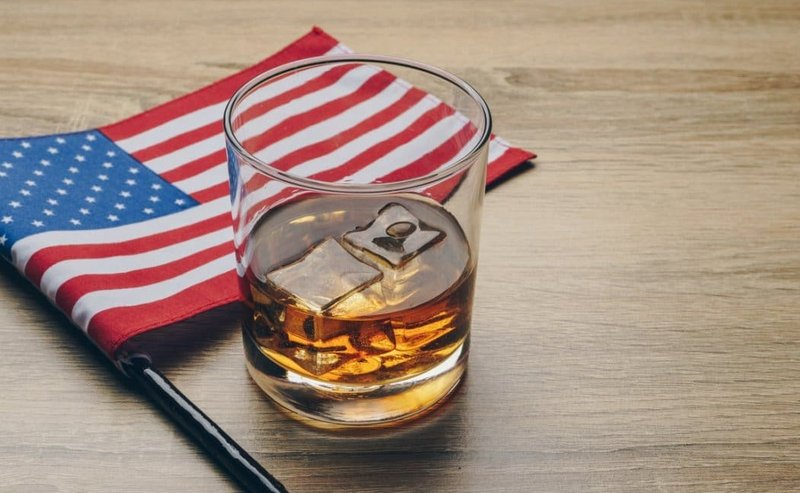
Bourbon falls under the whiskey umbrella, along with Irish whiskey, Canadian whisky, Scotch whiskey, rye whiskey, and corn whisky. It gets its name from Bourbon County in Kentucky.
Bourbon is an American whiskey that must contain a mash made of at least 51% corn, although most bourbons have at least 70% corn. Distillers can choose other grains for the rest of the mash bill, most commonly using rye, malted barley, and wheat.
It must also age for at least two years. Most premium bourbons age between 5 and 12 years, although some age for as long as 27 years.
Additionally, it must be aged in brand-new barrels made from white oak and charred inside. Distilleries can choose the level of charring they prefer.
This aging process brings out a nutty flavor with a subtle caramel sweetness. By law, water is the only additive distillers may include.
Tennessee whiskey has a lot in common with bourbon but undergoes a different filtration process, where it drips through 10 feet of sugar maple charcoal. This is called the Lincoln County Process.
Now let’s see how Irish whiskey and bourbon differ.
Irish Whiskey Vs Bourbon: 7 Key Differences
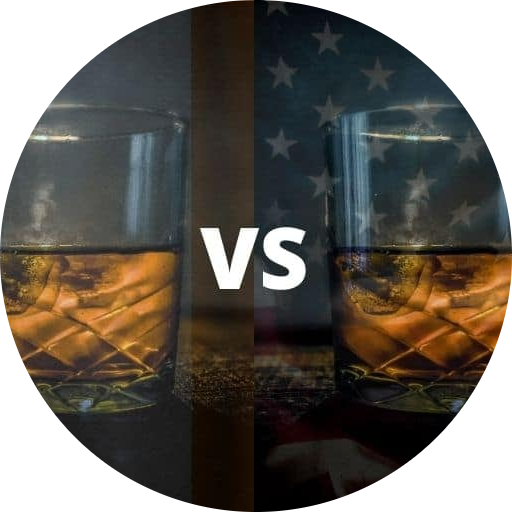
Let’s take a closer look at how these two spirits differ.
1. Origin
As we saw, Bourbon is made exclusively in the United States, while Irish whiskey comes from Ireland.
2. Classification
Let’s look at the types of Irish whisky:
- Single malt: Made from 100% malted barley and distilled using a copper pot still at one distillery.
- Single grain Irish whiskey: Contains up to 30% malted barley with some other unmalted grains or cereals, like wheat or corn. Single grain Irish whiskey is produced in one distillery using a column still.
- Single pot still: Contains at least 30% malted and unmalted barley. It's made in one distillery using a pot still. Apart from Ireland, no other country in the world can make single pot still whisky.
- Blended: Blended whiskey is most often a blend of malt and grain whiskey distilled in pots and columns at one or several distilleries. Jameson Irish whiskey is one of the best-known blended whiskey brands.
Next, let’s compare the various types of bourbon:
- Traditional bourbon: This is the classic bourbon whiskey. Made from about 75% corn, the remaining 25% is often a relatively even split between rye and malted barley.
Wild Turkey and Jim Beam are two well-known traditional bourbons. Wild Turkey comprises 75% corn, 13% rye, and 12% malted barley.
- Straight bourbon: Must meet the minimum requirements to be considered bourbon. I.e., it needs at least two years of aging in a charred oak barrel and contains no additives or colorants. Woodford Reserve and Knob Creek are well-known examples of straight bourbon.
The Woodford Reserve Baccarat edition is one of their most expensive, retailing for about $1,400. Whereas an 18-year-old bottle of Knob Creek sells for about $220.
- Kentucky bourbon: This simply refers to bourbon produced in Kentucky, which accounts for about 95% of all bourbon production. Kentucky bourbon must also age for at least one year.
- High-rye bourbon: Made from about 25% rye, these bourbons must still comply with the minimum 51% corn requirement, as opposed to American rye whiskey, which is its own category. The added rye gives these bourbons a more peppery flavor with a sharper bite and a spicy finish.
- Wheated bourbon: Wheat bourbon contains corn and barley but replaces rye with wheat as the primary flavor grain. This gives the bourbon a sweeter flavor than rye bourbon.
- Blended bourbon: A blended bourbon must contain at least 51% straight bourbon, but it can be from different distilleries.
3. Taste and smell
Irish whisky has distinctive notes on the nose and palate. It has smooth, light, fruity flavors and a distinct note of cereal grains.
Bourbon grain whiskey tends to be denser and sweeter, with oak, caramel, vanilla, and marshmallow flavors.
Of course, the flavor and bouquet will vary depending on the ingredients, distillation process, and aging.
4. Fermentation
Both spirits are aged in a charred oak barrel.
However, bourbon is strictly aged in a new charred oak barrel. The reason for using a new charred oak barrel is to ensure consistency in the flavor elements.
Traditionally, reused Port, Madeira, and sherry casks were used to mature Irish whiskey.
But more recently, most Irish whiskey undergoes fermentation in reused bourbon barrels. The barrel accounts for as much as 60% to 70% of whiskey’s flavor.
Aging Irish whiskey in a reused American whiskey barrel imparts caramel, vanilla, and tropical fruit flavors.
The malt flavors are enhanced with notes of cinnamon, chocolate, and coffee when Irish whiskey undergoes aging in used rum or sherry casks.
Interestingly, distillers also use bourbon barrels to age rum, tequila, and other liquors.
5. Usage Preferences
While this will predominantly come down to your preference, certain cocktails generally favor either Irish or American whiskey.
A whiskey cocktail like a mint julep, the Manhattan, whiskey sours, and Don Draper’s favorite, the old fashioned, typically favor bourbon.
Whereas a whiskey cocktail like an Irish coffee or an Irish sour mostly uses Irish whiskey.
Of course, purists will argue that Irish and American whiskies should be drunk neat. This is the ideal way to experience the spirit's flavors. However, diluting it with a splash of water is perfectly acceptable too.
6. Distillation methods
Both American and Irish whiskey uses a combination of column reflux and copper pot stills.
Like scotch whisky and Japanese whiskey, bourbon undergoes double distillation, where Irish whiskey is often triple distilled.
The theory behind triple distillation is that it makes the whiskey smoother. It removes the afterburn on the tongue and pronounces the fruity, tangy flavors. This makes it easier to drink than many American whiskies.
This also avoids the smoky peat commonly associated with Scottish whiskey.
7. Price
While it’s not difficult to find cheap whiskey, bourbon tends to have a wider price range.
You can buy a bottle of Jim Beam Gold Label 12 Bourbon Whiskey for as little as $4. But you’ll need to shell out over $54,000 for a bottle of Old Rip Van Winkle 25-Year-Old Kentucky Straight Bourbon Whiskey.
Irish whiskey, by comparison, tends to have a far smaller price range.
Magners Pear Cider, for example, also retails for about $4. But, one of the most expensive Irish whiskeys, J.J. Corry 'The Chosen' Single Cask 27-Year-Old Irish Single Malt Whiskey, sells for around $6,600.
What Do Irish Whiskey And Bourbon Have In Common?
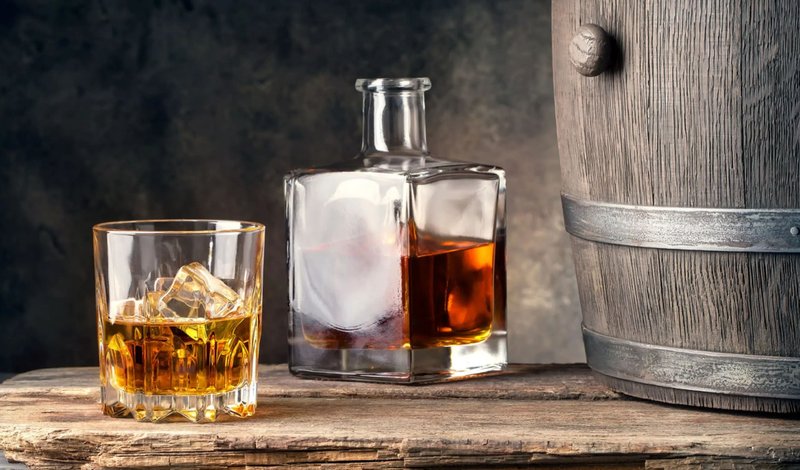
Irish whiskey and bourbon have a few things in common, including:
1. Solid ROI and Diversification
Both Irish whiskey and bourbon can offer a healthy return on your investment.
Of course, there’s no guarantee that every bottle will appreciate. But vintage and limited edition bottles of Irish whiskey and bourbon bottles have seen excellent appreciation.
Bourbon prices have enjoyed yearly appreciation since 1959, with 2017 and 2018 being the only exceptions.
There’s been a significant uptick in demand for high-quality American whiskey.
Overall whiskey sales in the US increased by $1.5 billion to $29 billion in 2019. Kentucky and Tennessee whiskey has seen the greatest demand, with a $1000 barrel worth around $4000 5 to 6 years later when it's ready for bottling.
A bottle of Old Rip Van Winkle 'Pappy Van Winkle's Family Reserve' 23-Year-Old Kentucky Straight Bourbon sold for $4,379 in January 2021. By January 2022, it had appreciated to $7,043.
What about Irish whiskey?
Irish whiskey has also experienced a significant surge in demand. After the near collapse of Irish whiskey, it’s now the fastest-growing premium spirit in the world. Between 2010 and 2020, global sales of Irish whiskey grew from 5 million to 12 million cases.
This soaring demand will soon outweigh supply, presenting an attractive opportunity if you own casks of Irish whiskey.
The best Irish whiskeys show attractive price appreciation.
A good example is the 2018 Midleton Very Rare Vintage Blended Irish Whiskey. It had a retail value of $227 in January 2021. One year later, it was worth $1,006.
In addition to the attractive potential returns, these spirits offer excellent portfolio diversification. They tend to be unphased by political upheaval, interest rate fluctuations, or company earnings.
Similarly, tangible investments like this generally perform better during periods of high inflation. During the previous three market crashes, whiskey remained a top performer, beaten only by bonds and gold.
2. Recession resistant
Both bourbon and Irish whiskey have a history of performing well during economic recessions.
During the 2007 - 2009 financial crisis, whiskey sales by volume only dropped 0.7%.
Further, being tangible assets bourbon and Irish whiskey have inherent value. Being able to hold your bottle of bourbon or whiskey physically also offers some personal satisfaction.
3. Longevity
Another benefit to adding Irish whiskey or bourbon to your portfolio is its longevity. You don’t need to worry about selling it before its expiration date, as both have an indefinite shelf life so long as they remain sealed.
Whiskey is high-proof alcohol, so it's nearly impossible for bacteria to develop. Whiskey may experience some degradation if left open, but even then, it's very unlikely.
Of course, how you store it plays a prominent role in its drinkability. Extended exposure to UV rays, for example, can break down the organic compounds in the whiskey, affecting its taste and aroma.
However, unlike wine, whiskey doesn't age in the bottle. In other words, it won’t improve with age.
Wondering how to invest in these whiskeys?
What Is The Best Way Of Investing In Irish Whiskey And Bourbon?

Investing in whiskey casks is the best way of putting your money into whiskey.
The cask market is still relatively new. This presents an opportunity to enter the market before competition peaks and the price appreciation that tends to follow.
You also don’t need to worry about transport or storage, as casks remain in bonded warehouses maintained by professionals.
Investing in Whiskey Casks through Vinovest
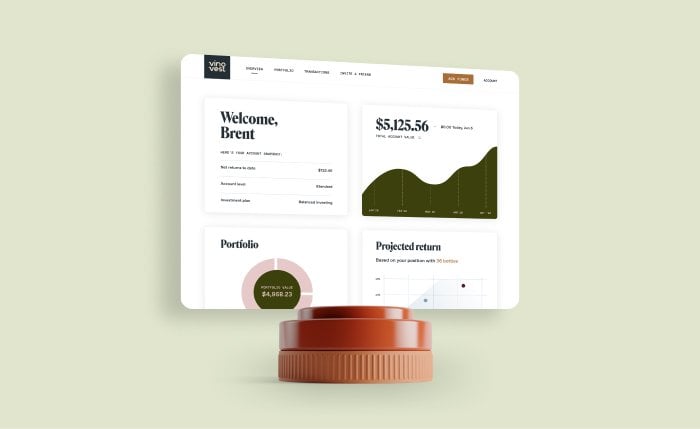
Vinovest makes investing in whiskey casks easier than ever.
With Vinovest, you can invest in some of the world’s most sought-after whiskey casks, including American whiskeys and some ultra-rare Scotch whiskey.
Explore the platform today to take advantage of this sought-after asset.
